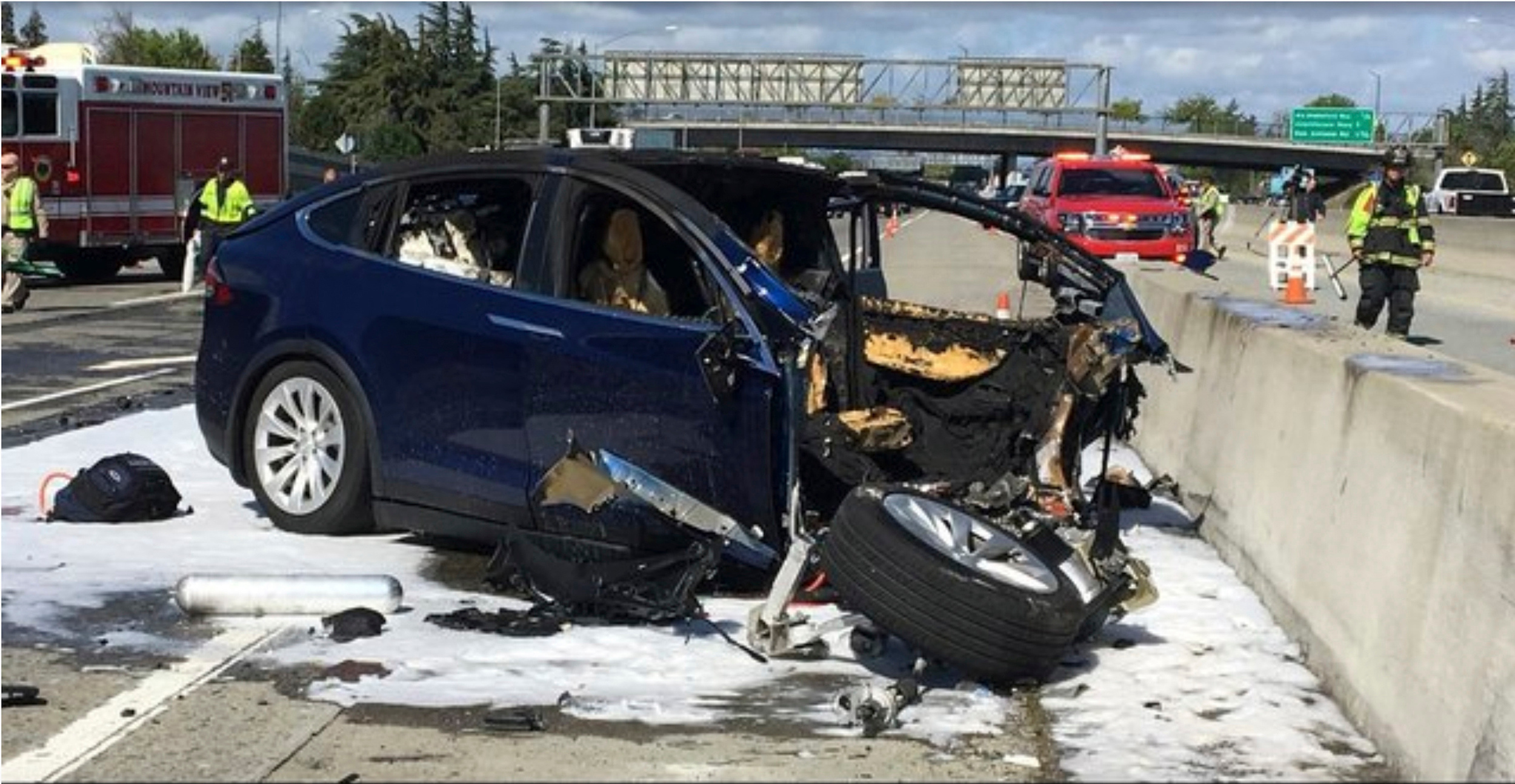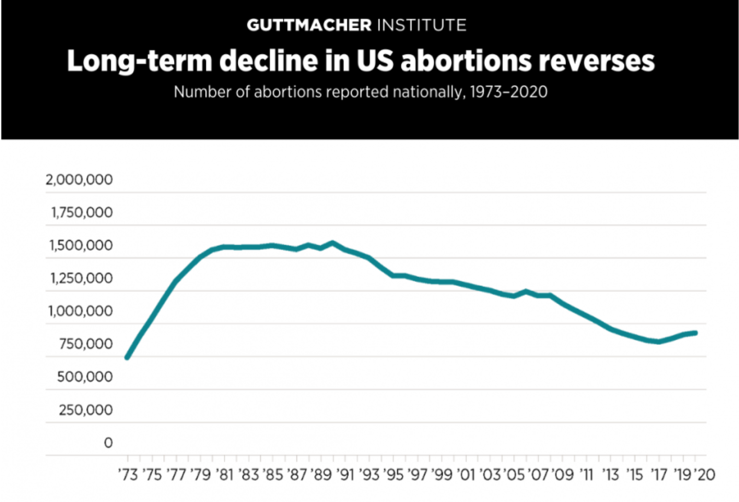 Covering COVID-19 is a daily Poynter briefing of story ideas about the coronavirus and other timely topics for journalists, written by senior faculty Al Tompkins. Sign up here to have it delivered to your inbox every weekday morning.
Covering COVID-19 is a daily Poynter briefing of story ideas about the coronavirus and other timely topics for journalists, written by senior faculty Al Tompkins. Sign up here to have it delivered to your inbox every weekday morning.
The Guttmacher Institute, a research group that supports abortion rights, just reported new figures showing abortion procedures rose from 862,320 in 2017 to 930,160 in 2020. The increase marks a reversal of a two-decade trend.
Guttmacher states:
According to new findings from Guttmacher’s latest Abortion Provider Census—the most comprehensive data collection effort on abortion provision in the United States—there were 8% more abortions in 2020 than in 2017.
That increase comes as the U.S. Supreme Court is poised to rule on a landmark abortion case that could restrict abortions in half of all states.
Guttmacher’s Abortion Provider Census finds:
- In 2020, there were 930,160 abortions in the United States, an 8% increase from 862,320 abortions in 2017.
- Similarly, the abortion rate increased from 13.5 abortions per 1,000 women aged 15–44 in 2017 to 14.4 per 1,000 women, a 7% increase.
- In 2020, about one in five pregnancies ended in abortion. More specifically, the abortion ratio (the number of abortions per 100 pregnancies) increased from 18.4% in 2017 to 20.6% in 2020, a 12% increase.
- The increase in abortion was accompanied by a 6% decline in births between 2017 and 2020.
- Because there were many more births (3.6 million) than abortions (930,000) in 2020, these patterns mean that fewer people were getting pregnant and, among those who did, a larger proportion chose to have an abortion.
- The number of abortions increased in all four regions of the country between 2017 and 2020. The rise was largest in the West (12% increase) and Midwest (10% increase); abortions increased 8% in the South and 2% in the Northeast.
The institute drilled down on trends in individual states.
New York: Abortions increased 5% between 2017 and 2020, increasing between 2017 and 2019 then dropping 6% from 2019 to 2020. COVID-19 may have been a major cause for the drop since so many clinics were closed.
Illinois: Most of the state’s 25% increase from 2017 to 2020 happened between 2017 and 2019. More people came to Illinois from Missouri to get abortions. In 2018, Illinois began allowing Medicaid funds to pay for abortion care, which may have contributed to the increase.
Missouri: Abortions fell from 4,710 in 2017 to 170 in 2020 and Missourians increasingly went to Illinois to get the procedure.
Mississippi: Abortions increased 40% between 2017 and 2020 in this state that has one abortion clinic.
Maine: Abortion incidence increased 16% between 2017 and 2020. In January 2020, Maine required private insurance to pay for abortion care and allowed state Medicaid funds to pay for abortions.
Texas: Abortions increased 7% in Texas between 2017 and 2019, then dropped after the Texas governor said abortions were “nonessential” health care during the pandemic.
Florida: This state’s 9% increase from 2017 to 2020 included an increase in people from neighboring states that restricted abortions during this time frame.
You can get the raw data here, including state-by-state data.
The Guttmacher survey is based on responses from about half of the 1,687 facilities that provide abortions in the U.S., plus data from state health departments.
See coverage of this survey by The Associated Press, Reuters and The New York Times, and see other survey data about abortions and attitudes toward abortion laws from Pew Research.
Has America lost its sense of morality?
Gallup researchers find that half of Americans say the country is in a moral decline. The surge in people saying that are mostly people who call themselves Republicans.
Republicans’ increasingly negative assessment of the state of moral values is largely responsible for the record-high overall poor rating. At 72%, Republicans’ poor rating of moral values is at its highest point since the inception of the trend and up sharply since Trump left office.
At the same time, 36% of Democrats say the state of moral values is poor, while a 48% plurality rate it as only fair and 15% as excellent or good. Independents’ view of the current state of moral values is relatively stable and closer to Democrats’ than Republicans’ rating, with 44% saying it is poor, 40% only fair and 16% excellent or good.
The No. 1 issue that Americans say is an indication of moral decline is our lack of “consideration for others.” A much larger percentage of Americans cite racism and discrimination as moral issues today than they did 20 years ago, but the number of people who see the decline of “the family structure” as a moral issue today is less than two decades ago.
Rapidly rising day care/babysitting costs
In 2019, 31% of American parents said they would spend 20% of their income on child care. Now, Care.com estimates half of parents with young children will spend 20% of their income on child care. That threshold, 20%, is the figure the government uses to define “affordable” child care.
By the way, The Wall Street Journal says it is not uncommon for babysitters to charge $18 an hour now, which is up from $14.72 in 2020. CBS reported recently that babysitting now pays $20 an hour.
Desperate employers giving workers with a criminal history a ‘fair chance’
Axios published an interesting story about how employers, desperate to hire, are giving people with criminal backgrounds a chance to earn a living.
Axios explains:
2.5% of job listings on Indeed now advertise “fair chance” hiring, according to an analysis conducted by Ann Elizabeth Konkel, an economist at the job site’s Hiring Lab. That’s up from just over 1% in early 2018 — though down a bit from a high of 3.1% in April.
“Fair chance” listings were defined by Indeed as those including that phrase, plus ones like “no background check” or “felon friendly.”
An Axios story in March reported:
“Suddenly employers are faced with a choice of raising wages to attract workers or attempting to increase hiring of people with records to keep wages low,” said Beth Avery, a senior staff attorney at the National Employment Law Project.
Over the past year, there’s been a 12% increase in the number of workers who are being continuously monitored, according to Appriss Insights, which works with companies on these checks.
This comes with some major pitfalls, Avery noted. Black Americans tend to be more harshly treated by police and the courts, so if employers are getting flagged when someone is arrested or charged, it could have a disproportionate effect on them, she said.
New data: 392 advanced driver-assisted vehicle crashes in 10 months

In this Friday March 23, 2018 photo provided by KTVU, emergency personnel work a the scene where a Tesla electric SUV crashed into a barrier on U.S. Highway 101 in Mountain View, Calif. (KTVU via AP)
The National Highway Traffic Safety Administration just released data that shows the relative dangers of vehicles that assume at least some of the driving duties once reserved for humans.
From July 1, 2021, through May 15, 2022, six people died in crashes that involved Teslas using Autopilot. In all, Tesla vehicles using a self-driving mode were involved in 272 crashes.
NHTSA data said other vehicle brands using self-driving capabilities were involved in crashes including:
- Honda vehicles – 90 incidents
- Subarus – 10 incidents
- Ford Motor, General Motors, BMW, Volkswagen, Toyota, Hyundai and Porsche vehicles were involved in five or fewer incidents
Here is a map of where the crashes occurred:
This NHTSA graphic shows more details about the crashes:
NHTSA officials pointed out that the crash figures by themselves may be misleading because Teslas represent about 70% of the self-driving crashes but Tesla is by far the best-selling vehicle with self-driving capabilities. So, the figures do not prove Teslas are less safe than others.
NHTSA’s study holds out hope that driver-assisted tech will make driving safer than putting humans solely in control of the car or truck. NHTSA explained that, for now, these advanced tech cars are still in test mode:
This effort comes at an important time as L2 ADAS are increasingly common features on many new vehicles and provide driver assistance functions that also combine technologies, like lane centering assistance and adaptive cruise control. Drivers, though, must remain engaged and alert at all times when using these systems, as they are not designed to and are not able to perform critical operating components of the driving task. These vehicles include driving support features, not automated driving features.
ADS-equipped vehicles, which are able to perform the complete driving task in limited circumstances, are not currently sold to consumers. They are in limited use on public roads around the country for testing various mobility types, including ride hailing, shuttle services, and delivering goods. Interest in more widespread deployment has continued to grow.
We’ll be back tomorrow with a new edition of Covering COVID-19. Are you subscribed? Sign up here to get it delivered right to your inbox.












